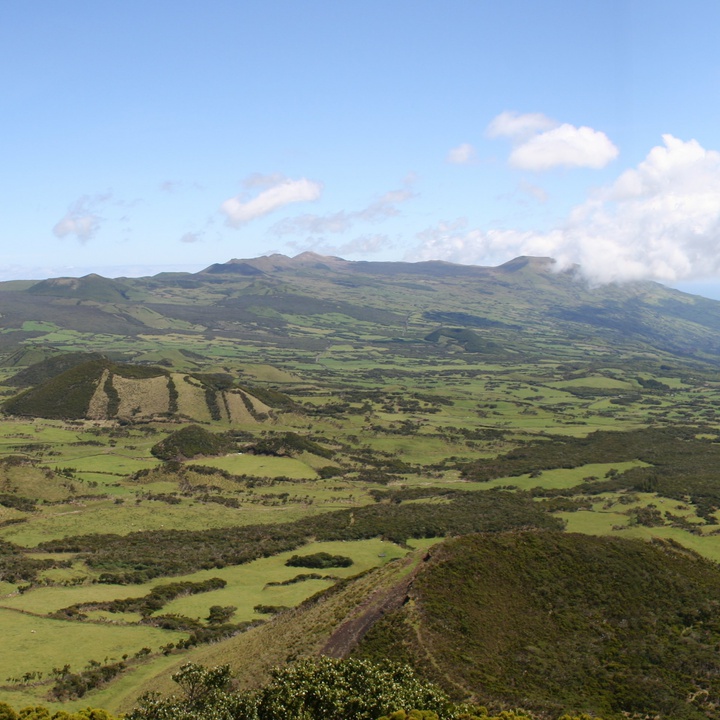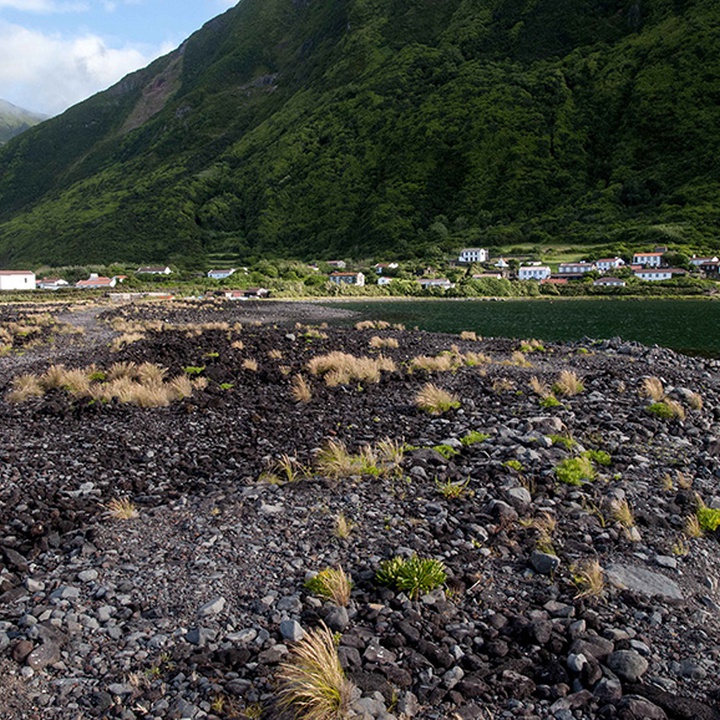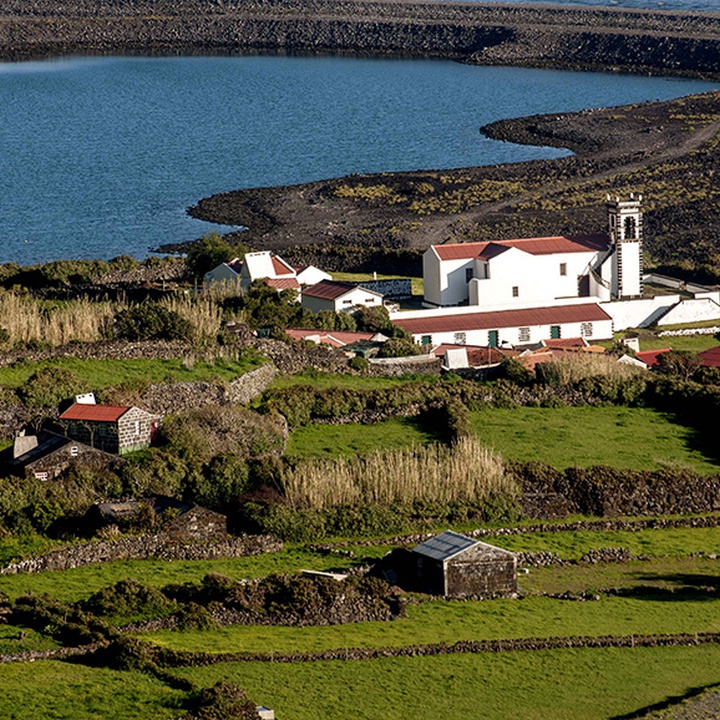Text size:
Serra do Topo - Caldeira de Santo Cristo - Fajã dos Cubres PR1SJO
How to get there
Leaving Calheta village, follow the Regional Road 2-2 to the Calheta Health Centre and turn right to Topo. Still on Regional Road, proceed about 9 kilometres towards the east. After passing the Pico da Urze Wind Farm, on your left, go about 300 metres and after a tight turn, find the support parking lot of the trail on your right.
Recommended gear
Appropriate footwear for walking, waterproof jacket, hat, sunscreen and water.


Gallery
The trail begins in the north-eastern region of the Pico da Urze Wind Farm, passing by Caldeira de Santo Cristo and finishing at Fajã dos Cubres.
This trail, inserted into the Fajãs do Norte Protected Landscape Areas, is distinguished by passing in places considered unique, highlighting the coastal lagoons of Fajãs of Caldeira de Santo Cristo and of Cubres.
Along the way, you can find many species of birds such as the Fringilla coelebs moreletti, the Regulus regulus inermis, the Turdus merula azorensis and the Buteo buteo rothschildi. For flora, there are numerous examples of Blechnum spicant, Hypericum foliosum, Vaccinium cylindraceum, Frangula azorica, Picconia azorica and Sphagnum spp.
Start the walk on the regional road, in the north-eastern region of the Pico da Urze Wind Farm, along a dirt path, where you will find several specimens of endemic flora.
Follow the marks passing a shelter, at which point the trail enters a descending phase towards Caldeira de Cima. Cross the Tia Júlia bridge, following carefully (slippery road) a detour on the right to Cascata Pequena.
Along the descending path, you will pass some fountains and a place from where you can see the Caldeira Santo Cristo (caldera). Continue to the fajã, passing by the Santuário do Senhor Santo Cristo and the Environmental Interpretation Centre.
In this place, you can visit the Lagoa da Caldeira de Santo Cristo (lagoon), mainly known for the clams (Ruditapes decussatus), a unique species in the Archipelago, and a significant place for resident birds, as well as for some migratory species. With the increase of touristic activity in the Region, the fajã was discovered by the water sports community and classified as a bodyboard and surf sanctuary.
Continuing the trail and following the route in the north-eastern direction, you will pass Fajã dos Tijolos and Fajã do Belo, named after its owner, Diogo Nunes Belo, a noble person from the 17th century and which remained inhabited until the 1980 earthquake.
Along the way, there are steel cables, which were formerly used to transport firewood to the populated areas. From this point, it is already possible to see Fajã dos Cubres in the background, where the trail ends, next to the Nossa Senhora de Lourdes Church.
Fajã dos Cubres is a place of cultural interest, heritage and landscape, where you can find old tidal wells, faithful testimonies of past experiences, as well as a coastal lagoon.



